Apple announced a major update to the iPad Air at its Time Flies event on 15 September 2020. The new iPad Air (4th generation) features an all-screen display, an innovative new Touch ID sensor, and a powerful new A14 Bionic processor.
We’ve explained everything you need to know about the iPad Air (4th generation) below, including all the new features compared to the previous generation.
Contents
- What is the release date of the iPad Air (4th generation)?
- How much does the iPad Air (4th generation) cost?
- Design features on the new iPad Air (4th generation)
- The all-screen display on the iPad Air (4th generation)
- Apple even improved the camera on the new iPad Air
- The A14 Bionic processor gives the iPad Air even more power
- Support for the Apple Pencil and Magic Keyboard
- Is it worth buying the iPad Air (4th generation)?
What is the release date of the iPad Air (4th generation)?
Unlike the other products Apple unveiled at its Time Flies event—Apple Watch Series 6, Apple Watch SE, and iPad (8th generation)—you need to wait until October 2020 for the iPad Air (4th generation).
Apple made its other products available for pre-order immediately following the live event. But the iPad Air (4th generation) simply says “Available in October” with no option to pre-order before then.

The iPad Air (4th generation) will be available in 30 countries and regions upon its release, including the US.
At least we know the price already.
How much does the iPad Air (4th generation) cost?
The iPad Air (4th generation) is available in 64GB or 256GB sizes with both Wi-Fi and cellular variants available.
Prices start at $599, which is $100 more than previous generations. Although you get a lot more bang for your buck with the new iPad Air features, which we’ll get into shortly.
- iPad Air (Wi-Fi)
- 64GB: $599
- 256GB: $749
- iPad Air (Cellular)
- 64GB: $749
- 256GB: $879
Design features on the new iPad Air (4th generation)
The most striking change to the iPad Air (4th generation) is its new all-screen design. This mimics the look of the iPad Pro, which drops the Home button and pushes the display towards all four edges of the iPad.
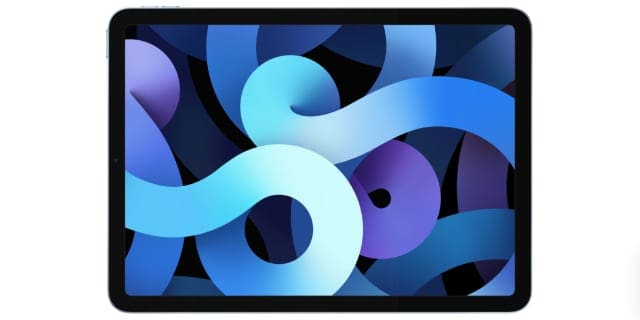
Unlike the iPhone, wider bezels on the iPad Air and iPad Pro mean there is no need for a notch to hold the FaceTime HD camera or sensors above the screen.
Surprisingly, the iPad Air (4th generation) doesn’t offer Face ID.
Instead, it’s the first Apple device to integrate Touch ID into the Top button, using Apple’s second-generation Touch ID technology for fast fingerprint recognition.
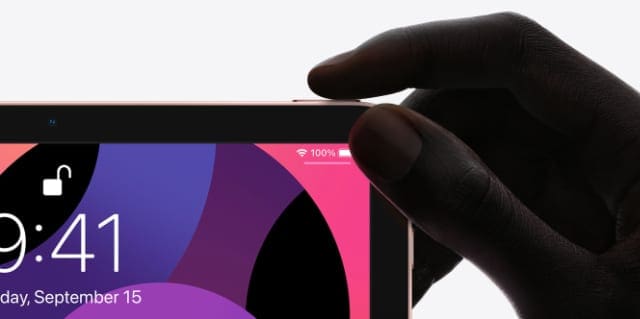
Cribbing from the iPad Pro once again, the iPad Air (4th generation) now features a USB-C port, rather than the Lightning port. This promises faster data transfer speeds and better compatibility with third-party accessories, such as cameras or external displays.
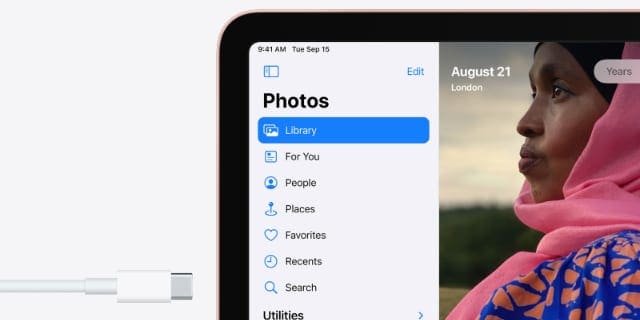
The 100% recycled aluminum enclosure on the iPad Air (4th generation) is 3mm shorter and 4.4mm wider than the previous iPad Air. However, it is the same depth and weight as before.
The iPad Air (4th generation) also comes in more colors than we’ve ever seen for the iPad. You can choose between:
- Silver
- Space Gray
- Rose Gold
- Green
- Sky Blue
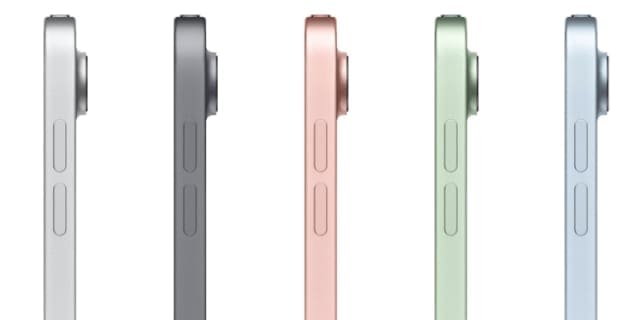
The all-screen display on the iPad Air (4th generation)
The most important aspect of any tablet is the display, and the iPad Air is no exception. With the new iPad Air, Apple pushed the screen closer to the edges of the device, leaving just a small bezel so you can still hold it.
Apple upgraded the iPad Air display from retina to liquid retina. This doesn’t change the resolution, which is still 266ppi, but it does mean the display features rounded corners to follow the shape of the iPad Air enclosure.
It’s also a bigger display than previous iPad Air models. Measuring 10.9 inches across—compared to 10.5 inches on the previous iPad Air—it is now only 0.1 inches smaller than the smallest iPad Pro.
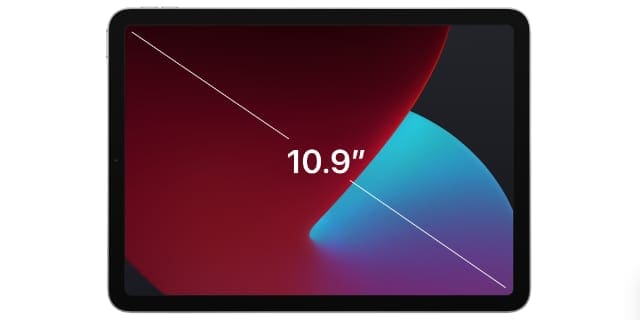
You can also enjoy True Tone color, P3 wide colors, and an antireflective coating on your iPad Air (4th generation) display, all of which were available on the previous generation as well.
Apple even improved the camera on the new iPad Air
Plenty of people still use the camera to take photos with their iPad, despite usually having a better camera on their smartphone. Taking notice of this, Apple improved the rear camera on the iPad Air (4th generation), upgrading it from 8MP to 12MP.

The aperture also changed from f/2.4 in the previous iPad Air to f/1.8, matching the wide-angle camera in the iPad Pro. That said, the iPad Air (4th generation) still lacks the ultra-wide camera and LIDAR sensor featured on the iPad Pro.
Video quality receives a boost with this upgrade as well. Previously, the iPad Air could only record video at a maximum quality of 1080p at 30fps. Now, the iPad Air (4th generation) can film 4K video at 60fps, with 240fps available for slow-mo videos as well.
The A14 Bionic processor gives the iPad Air even more power
Featuring Apple’s new A14 Bionic processing chip, the iPad Air (4th generation) is now 40% faster than the previous generation, with 30% better graphics performance.
The A14 Bionic is Apple’s most advanced chip ever. It features 11.8 billion transistors in a six-core design, with four-core graphics architecture, and a 16-core Neural Engine. The A14 Bionic is capable of 11 trillion operations per second.
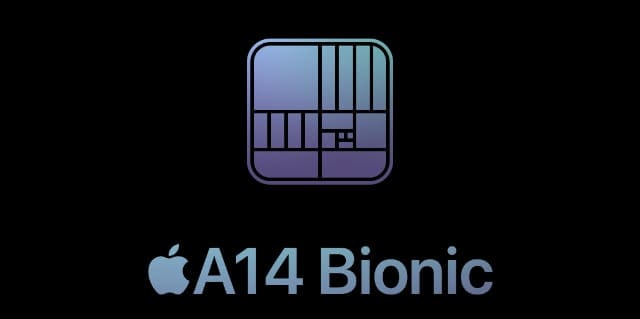
All of this means the new iPad Air is immensely powerful, capable of editing 4K video, rendering 3D graphics, and performing all manner of CPU-intensive tasks.
Support for the Apple Pencil and Magic Keyboard
The iPad Air (4th generation) gains support for Apple’s floating Magic Keyboard and the second-generation Apple Pencil. Previously, both of these accessories were exclusive to the iPad Pro, but not anymore.
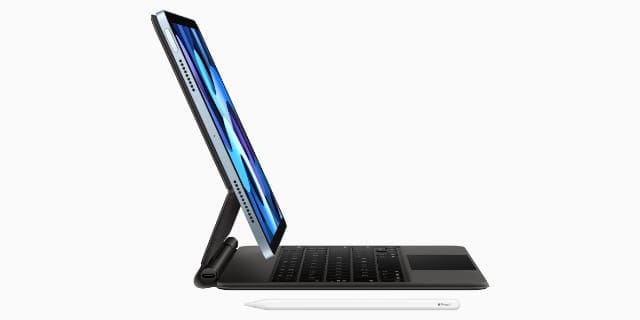
The Magic Keyboard features an innovative floating design that props the iPad at a convenient height above the keyboard. It also offers a built-in trackpad that works spectacularly well with iPadOS.
The Apple Pencil (2nd generation) can charge wirelessly by magnetizing to the edge of your iPad. This makes it perfect for grabbing off your iPad whenever you want to scribble a quick note.
Speaking of scribble, iPadOS 14 launched the day after Apple’s Time Flies event and introduced all-new handwriting recognition on the iPad. You can now highlight, search, copy, and paste handwriting from your Apple Pencil like you would any other text.
Is it worth buying the iPad Air (4th generation)?
Although the iPad Air (4th generation) starts at a higher price point than previous models, it offers a lot of value for the extra money. In fact, Apple will need to offer serious updates to the iPad Pro to stop the new iPad Air cannibalizing its sales.
We think the iPad Air (4th generation) is a stylish and future-proof tablet that offers more than any other iPad Air in the past. For most users, it’s likely to be the perfect iPad to buy.

Dan writes tutorials and troubleshooting guides to help people make the most of their technology. Before becoming a writer, he earned a BSc in Sound Technology, supervised repairs at an Apple Store, and even taught English in China.










Write a Comment